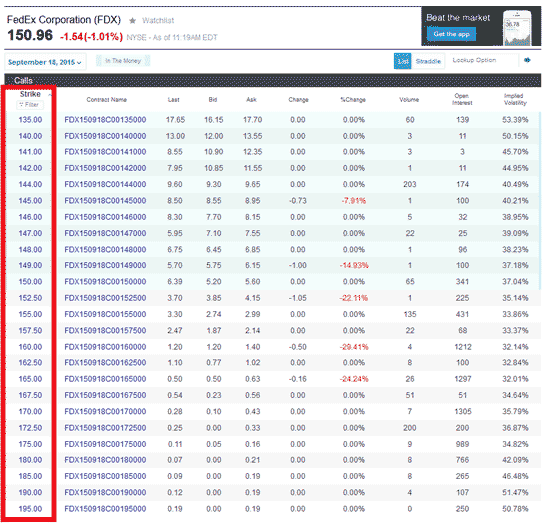The last two weeks have seen significant market action in both directions. And it's just more proof that you need options in your portfolio to help cut your risk and boost your potential returns. Traditional buy-and-hold investors have been taken to the cleaners by whipsaw markets.
I don't want that happen to you.
Increased volatility will continue as we head into September and October. So I want take this opportunity to reexamine some of the fundamentals of options to help reinforce your understanding of the more sophisticated topics we've been covering lately. It's crucial that you have a strong grasp of the fundamentals, especially if you're new to the material - you won't be a master trader until you have this stuff down.
If you're familiar with options, this a great opportunity for you to brush up on the basics - you may even learn something new. If you're new to options trading, you've picked the perfect time to join us.
So let's take a step away from the market chaos and get back to basics...
The Difference Between Calls and Puts
Let's start from the beginning with a very simple definition - an option is a contract that gives the owner the right to buy or sell a financial product at a specific price on or before a specific date. When dealing with equity options (like we do in my Power Profit Trades free e-letter), that financial product is usually a stock or an ETF.
 There are two different kinds of equity options:
There are two different kinds of equity options:
A call option gives the owner the right (but not the obligation) to buy the underlying instrument on or before the expiration date. You profit on a call when the underlying instrument increases in price.
A put option gives the owner the right (but not the obligation) to sell the underlying instrument on or before the expiration date. You profit on a put when the underlying instrument decreases in price.
Calls and puts are bought to establish a long position or sold (also known as writing) to establish a short position. However, selling to open an options position obligates the seller (or writer) to fulfill their end of the contract.
If you sold calls, that means you must sell the underlying; if you sold puts, that means you must buy the underlying. When you sell calls, you have no control over whether or not a contract is exercised.
Writing options is very risky unless you put on a simultaneous long play to cut that risk. Subscribers to my Money Calendar Alert investing service do this all the time with my recommended "loophole" trades.
Strike Price
The term for the specific price at which an option contract is exercised is the strike price. The number of available strikes (options) on a given stock or ETF is dependent on a multitude of factors...
For one, the range in which an instrument has recently traded plays a part. If you have a stock that has traded between $50 and $100 over the past six months or so, there will be strike prices around both of those prices and in between. How in-demand the options are also speak to the number of strikes as well as which expiration months are made available.
For stocks priced from $5 to $25, the strike prices are usually listed in increments of $2.50. For stocks priced from $25 to $200, the strikes are usually found in $5 increments. From $200, they are typically listed in $10 increments.
Depending on demand, you may see strike prices listed in $1 increments. When demand is really high, there can be as little as $0.50 separating one option from the next.
Below is a snapshot of the Sept. 18, 2015 call options for FedEx Corp. (NYSE: FDX) as listed on Yahoo! Finance. As you can see, the prices reflect the stock's trading range over the last few months, and the strike prices are mostly in $5 increments (especially at the high and low end, where there is less demand). Where demand is higher, the strike prices are in $2.50 increments.

An option's strike price helps to determine its intrinsic value. That's the difference between the strike price of your option and the market price of the underlying instrument at any given time - if the difference is negative, your option has no intrinsic value. However, that can change over time.
Expiration and Exercising Your Option
Expiration is the last date on which you can exercise your option. For all intents and purposes, expiration occurs at the close of market on the third Friday of the month. Technically, they settle accounts the following Saturday, but since the markets don't trade on Saturday, expiration is considered Friday. For example, the September 2015 standard option expiration is going to be the close of market on Sept. 18.
I say standard because nowadays there is such a demand for options trading that weekly expirations have been created. In fact, the first weekly option expiration contracts (or weeklies) were started by the Chicago Board Options Exchange (CBOE) in October 2005, and as time went by, they decided to write weeklies on more and more stocks.
They operate the same way as the standard options do, but since they aren't as actively traded as the standard option expiration contracts, they tend to have less liquidity - and wider spreads (here's why that's a problem) - than the standard strikes do.
There will almost always be options available on the current month and the next month out, regardless of which option cycle the stock is on. There may also be weekly options and there may be LEAPS options available, too.
LEAPS stands for Long-Term Equity Anticipation Securities. These are the longest expiration contracts available. LEAPS options also operate much in the same manner as the shorter term ones do, but have expirations as far out as three years, giving your trade a long time to work itself out. To wrap things up, before you get started trading options, it's important to know the basics:
- Call optionsgive you the right to buy the underlying instrument at a specific price on or before a specific date, while put options give you the right to sell the underlying instrument at a specific price on or before a specific date.
- The strike priceis the price at which you can exercise your option.
- Expirationis the last date on which you can exercise your option.
Follow us on Twitter @moneymorning.
The One Options "Timing" Lesson You Need Now: Options expire. But that "fixed-time" feature doesn't have to work against you. Quite the opposite. It gives you the flexibility to focus your trade the way you want to - a flexibility you don't have with a straight long or short equity position. But you need to know how to use it...
About the Author
Tom Gentile, options trading specialist for Money Map Press, is widely known as America's No. 1 Pattern Trader thanks to his nearly 30 years of experience spotting lucrative patterns in options trading. Tom has taught over 300,000 traders his option trading secrets in a variety of settings, including seminars and workshops. He's also a bestselling author of eight books and training courses.



